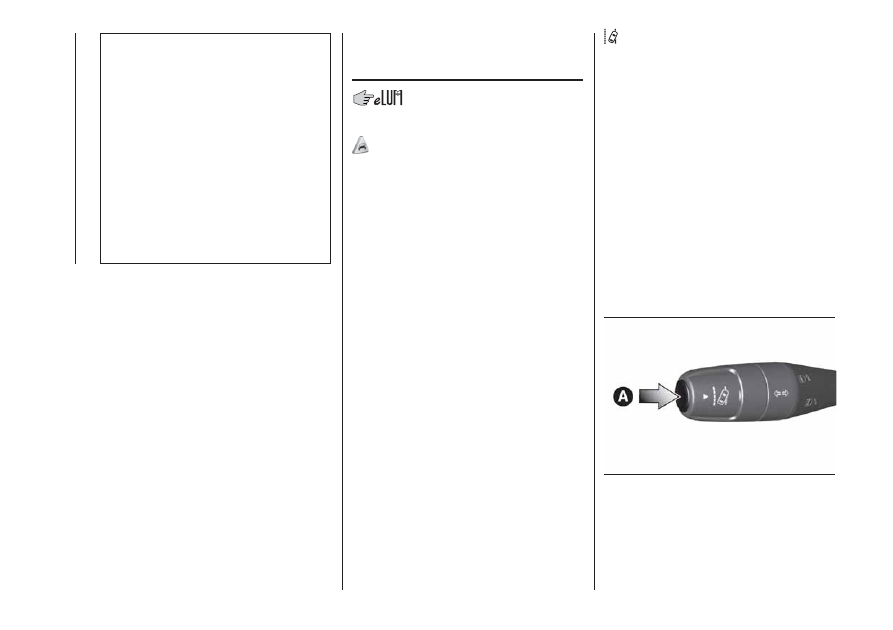Fiat 500X (2019 year). Instruction - part 9

55) Have interventions on the bumper in
the area of the sensors carried out only by
a Fiat Dealership. Interventions on the
bumper that are not carried out properly
may compromise the operation of the
parking sensors.
56) Only have the bumpers repainted or
any retouches to the paintwork in the area
of the sensors carried out by a Fiat
Dealership. Incorrect paint application
could affect the operation of the parking
sensors.
57) The rear sensors may provide a false
reading, interpreting the tow hook ball
assembly and the respective attachment as
an obstacle in the area behind the car.
LANE ASSIST
SYSTEM (lane
crossing warning)
DESCRIPTION
58) 59) 60) 61) 62) 63)
The Lane Assist system makes use of a
camera located on the windscreen to
detect the lane limits and calculate the
position of the car within such limits, in
order to make sure that it remains
inside the lane.
When the one of the lane lines is
detected and the car crosses it without
the awareness of the driver (direction
indicator off), the Lane Assist system
provides a tactile warning by applying
torque to the steering wheel (vibration),
thus advising the driver that he must
take an action to remain in the lane.
IMPORTANT The torque applied to the
steering wheel by the system is
sufficient for the driver to notice it, but
always limited, so that they can easily
override it, and the driver always
maintains control of the car. The driver
can therefore turn the steering wheel as
required at all times.
If the vehicle continues going beyond
the line of the lane without any
intervention from the driver, the
warning light (or the icon on the
display) will be displayed on the
instrument panel to urge the driver to
bring the vehicle back into the limits of
the lane.
IMPORTANT The system monitors the
presence of the driver's hands on the
steering wheel. If they are not detected,
the system emits an acoustic warning
and deactivates until it is reactivated by
pressing the dedicated button (see
description below).
SYSTEM ON/OFF
The Lane Assist system can be
enabled/disabled using button A
fig. 106, located on the left stalk.
Each time the engine is started, the
system keeps the activation status
there was when it was previously
switched off.
106
F1B0334C
138
ST
AR
TING
AND
DRIVING